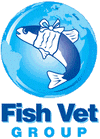
Fungi have the capacity to capitalise on any failures with a fish's environment and can afflict fish at almost any stage in their development. Within commercial fish farming they are most frequently a problem during the freshwater phase of development.
So what fungi are we talking about ?
Potentially damaging fungi include:
The Oomycetes, typically Saprolegnia species, cotton wool fungus, commonly seen attached to skin of affected fish in freshwater but can also be found in gills rapidly leading to mortality. Saprolegnia is a water mould and a range of species exist but the major species causing problems for live fish is Saprolegnia parasitica. Depending on the incubation method developing eggs if not regularly treated can quickly become heavily infected with Saprolegnia and any other fungal species present in the water leading to very high losses.
Soil associated fungi such as Phoma herbarum and Paecilomyces farinosus are most prevalent, initially developing within the swimbladder but in severe case extending out into the gut tissues even penetrating through the peritoneum and into the muscle. Young salmon fry can become infected when they rise to the surface to fill their swimbladders and ingest fungal spores that are present in the upper water layers.
Water and airborne fungii including Saprolegnia, Aspergillus or Penicillium species can be ingested on contaminated feed particles lying on the bottom of the tank or on poorly stored feed. They can establish a localised infection within the gut with secondary spread through the gut wall to infect other abdominal tissues such as pancreas, liver, spleen and kidney. These infections commonly occur around first feeding time for salmon where lots of uneaten feed accumulates on the tank bottom and young fish will ingest the contaminated feed.
Potent toxins can be produced by certain fungal species eg Aspergillus species can produce an aflatoxin which if ingested in contaminated feed will induce liver cancer, rainbow trout are particularly susceptible to this toxin.
Exophiala fungii are self-pigmented allowing easy identification when infected tissues are viewed under the microscope. They are associated with chronic inflammatory lesions, granulomas, and are thought to be ingested through infected feed. This author believes that ingestion may well be the route but it is more likely via fish eating other fish species trapped in their cages eg sprats, coalfish or herring fry. These seem more plausible vectors rather than fish food that is likely to have been extruded at temperatures that will pasteurise feed ingredients, at the very least.
Ichthyophonus hoferi is a complicated fungus with a range of life stages typically found in wild herring again producing multiple granulomas throughout a range of tissues including the muscle giving it a sandpaper appearance rendering the flesh wholly unsuitable for eating.
Dermocystidium is another fungus that tends to cause multiple granulomas this time in delicate gill tissues. A closely related species has also been shown to cause considerable losses in cultured oysters.
Prototheca salmonis is a relatively obscure achloric alga ie lacking chlorophyll that again produces severe, extensive granulomatous disease in freshwater salmon parr. Other species of the same genus have been shown to cause disease in humans.
Blue-green algae eg Oscillatoria species, can also be ingested probably by underfed fish grazing on nets leading to acute death due to toxins released in the gut - the algae are not harmful when alive but become toxic once they have been digested. The toxins are very powerful and act on the liver and the fish's nervous system leading to acute mortality in affected fish. It should be noted that not all species of Oscillatoria are potentially toxic, just around 50%.
For the fish farmer fungal infections are not as worrying as they may seem as most fungi are opportunists and as long as good husbandry practices are adopted then fungal infections should not be a problem.
The key areas to address are:
Ensuring an hygienic environment for fish with regularly cleaned tanks and covers, well designed tanks ie self-cleaning with good water flows
Ensure that feed is stored properly and not allowed to become contaminated
Ensure that feeders or feeding systems are kept clean and that feeding rates and frequencies are appropriate to fish size ensuring an optimum environment for fish to grow
In the loch environment the same principles apply regarding clean nets to ensure good water flows and feeders or feeding systems must be kept free from contamination
Prevention is much better than the cure and the identification of critical control points in the farming cycle are well known. The highest risk time for fish farmers is following intraperitoneal vaccination where if preventative treatments with an appropriate chemical are not followed, serious fungal infection with Saprolegnia parasitica can occur. Fish reared in lochs are more likely to be exposed to fungi than those reared in river fed systems. The most effective treatment to date has employed an unlicensed product, malachite green, a dye used for dyeing wool. However following a great deal of research by Novartis Animal Vaccines Ltd., a suitable alternative has been developed called Pyceze. Consequently the continued use of malachite green is unlikely and as such its withdrawal is certain- it is just a matter of time.

